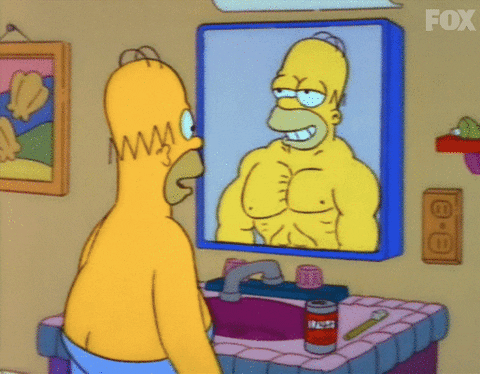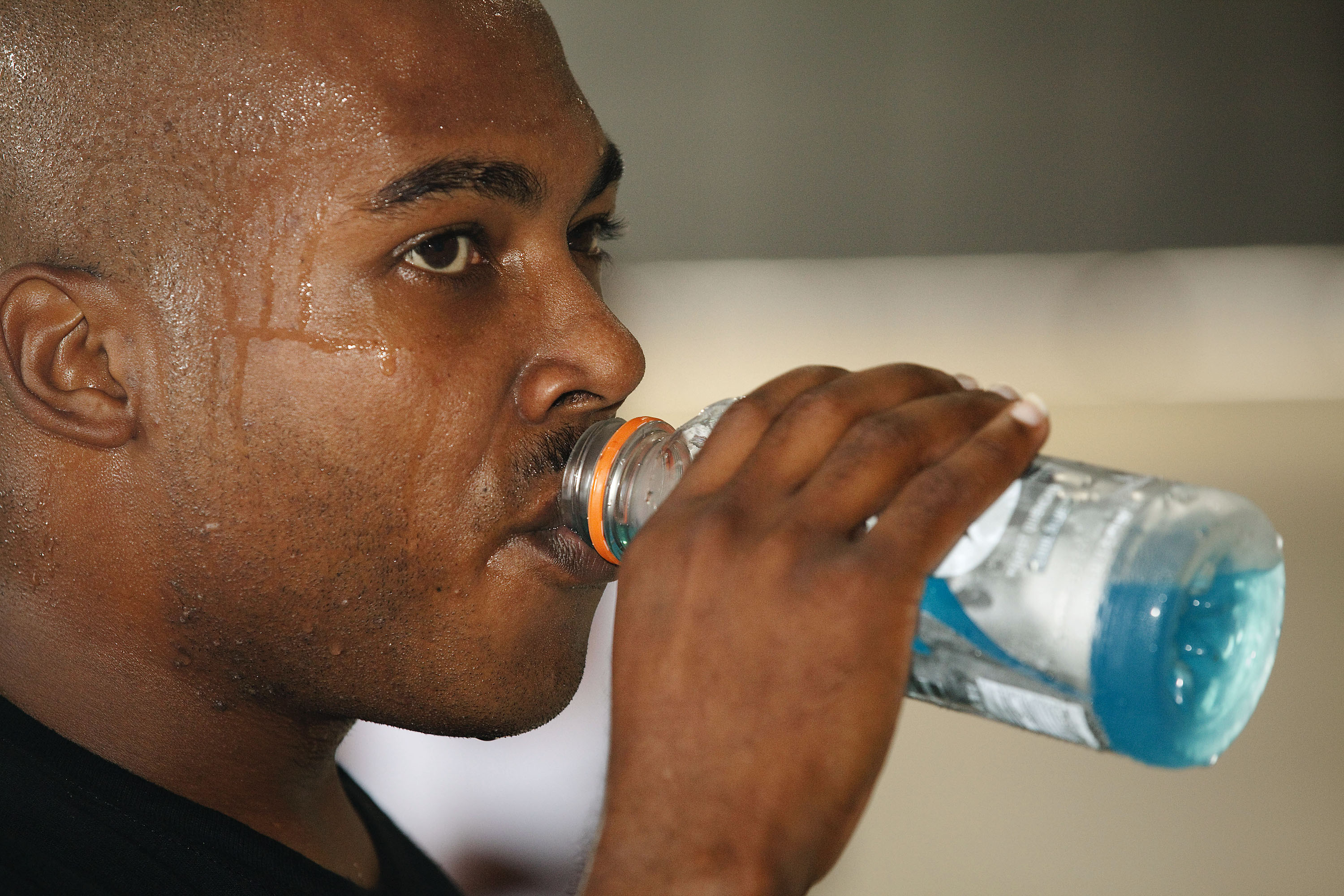Leave these old misconceptions behind
As our favorite G.I. Joe would always say, “Knowing is half the battle” and we’re about to drop some fitness knowledge, so get ready. It’s going to be a bit of long read but we promise it’ll be worth it!
Up ahead we take the deep dive into the world of fitness fact and fitness fibs. We’ll be discussing about how you can’t turn fat into muscle– and how you can’t spot reduce, either- how resting in between workouts is essential, setting a realistic body image, and whether or not carbs are good for you.
1. You can turn fat into muscle
Myth: You can “convert” fat directly into muscle.

It’s easy to see why this misconception is so popular and widespread. After all, whenever we see a #fitspiration transformation, we see fat go away and muscle take its place (so for the untrained eye, it’s easy to confuse fat turning into muscle). And honestly, it would just be plain easier and more convenient if that were the case.
The simple fact of the matter is that fat and muscle are different things. They’re different parts of the body, are composed differently, and serve different functions. So as attractive and tempting it might be to try and turn your fat straight into muscle, and no matter how many get fit quick programs or diet plans promise that they can, it’s time to accept the fact that it just isn’t possible.
Busting the Myth : This part is a bit complicated. In very brief terms, it’s all about calories. You lose fat when you have a calorie deficit (meaning you burned more calories that you consumed) while you build muscle on a calorie surplus (because building muscle requires that raw material). So you can see how striking that perfect caloric balance is going to be more than a little bit difficult.

Getting caught up in losing your fat and gaining muscle can lead to you achieving neither. For fitness newbies, it’s recommended that you focus on one goal: losing fat or building muscle.
Though it is technically possible to lose fat and gain muscle at the same time, it will be a complicated process that’s generally best left to fitness and nutrition experts who already know what they’re doing.
2. You should work out everyday
Myth: Working out as much as you can- everyday if possible- produces the best results.

If you lose weight when you work out, then working out everyday should produce results faster, right? The math kind of works out if you think about it, but you have to remember we’re not working out with numbers but with our bodies. And our bodies need rest. Again, you might think that doing nothing for a day is detrimental to your fitness journey, but studies have consistently shown that good rest days lead to better results.
Discover how proper rest leads to better results
Busting the Myth : It’s not just about working hard, but working smart. Though it’s typically recommended that you spend at least one full day to allow your body to rest, there isn’t really a set recovery period. Most of the recovery that our body does happens when we sleep, so be sure to get ample amounts of sleep in between workouts.
Each person recovers differently, so it’s important to listen to your body. If it’s telling you that it’s still too tired from the last workout, then listen to it! Take the extra day or half-day to rest, recharge, and attack your next workout with more energy and hunger.

If you’re really dead set on working out everyday (or maybe you just really enjoy going to the gym that much!) and you feel like your body can handle it, then you should at least vary the intensity of your training sessions . You don’t need to go 100% every time you go to the gym, and working out with adjusted intensities will give you better long-term benefits than burning yourself out in a short period of time.
3. You can spot reduce fat
Myth: You can do certain exercises which will burn away fat in a specific area, also known as “spot reduction”.
Bat-wing arms, thunder thighs, muffin-top bellies. Everybody has that one body part that they would slim down in a heartbeat if they could, so it’s easy to see why it’s so easy to believe this fitness myth.

It’s yet another of those fitness myths that almost makes sense. After all, if I do a workout that focuses on one body, my abs and core for example, shouldn’t it follow that that part of my body is the one that loses the most fat?
However, the truth is it just doesn’t work that way. When you exercise and expend energy, your body burns calories to help you keep up. Those calories don’t come from a specific place or body part, but is just taken from your general calorie “reservoir”.
So while your core will lose weight is you do a lot of sit-ups and planks, that’s because it’s burning calories from your entire body, not because you specifically did sit-ups and planks.

Busting the Myth: Unfortunately, there’s really no shortcut to solving a problem area. Like most things related to fitness, it’s all about being consistent and, more importantly, patient about good diet and exercise.
On the plus side, this means that you aren’t limited to doing only workouts that touch on your problem body part- meaning that you can feel free to explore different workouts without being to worried about focusing on specific body parts.
4. Everyone should look like bodybuilders or models
Myth: Instagram celebrities and comicbook heroes are the peaks of physical fitness and should be the body goals you strive towards.

This fitness myth is a bit more complicated because this one isn’t about what you do in the gym or misunderstandings about how your body works, because this fitness myth stems from society.
Related: A Food Lover's Guide to their Body Type and Why it Matters
More specifically, this myth comes from the fact that society- whether through social media, TV shows, movies, and many more- often sets unrealistic expectations of how you’re supposed to look like.
By showcasing and celebrating only a certain body type or certain features (tall, chiseled, curvy but not wide, almost no signs of body fat), everyone else who falls out of those body types or does not have those features are inadvertently told that the way they look right now isn’t enough and that they shouldn’t be happy with it.
Busting the Myth: So how are you, with the busy (and often full of compromise) lifestyle of a regular 9-to-6 worker, supposed to beat the impossible standards of beauty and fitness imposed upon you?

Well, just acknowledging the fact that those standards do exist and may be unfairly pressuring you is already a start. The next step is figuring out your actual body type and setting goals, expectations, and workouts based on that.
It’s good to have a specific body goal or fitspiration to look up to, but just because you don’t look like that doesn’t mean that you failed in your fitness journey. Remember, being fit does not mean looking a certain way, but it means being healthy and comfortable in your own skin.
5. Carbs are bad for you
Myth: Any form of carbohydrates are bad and should be avoided at all costs!
It seems that nearly everybody has developed a love-hate relationship with carbs. I mean, carbs just taste so good. Pasta, bread, potatoes, and especially rice- how can anyone say no to that?
But at the same time, they’re just so bad, right? They just pack on the pounds too quickly and too easily. And whenever you cut down on the carbs or go carb-free completely, the pounds just seem to melt away. So the less carbs, the better.
The truth about carbs is that some bad apples have given a bad reputation to the whole carbohydrate bunch. Yes, there are carbohydrates like white sugar which don’t really provide much in terms of nutritional value.
But carbohydrates like the ones in vegetables, fruits, grains, and even milk, are good for you and will make sure your body stays healthy during its fitness journey.

Busting the Myth: So, should you be eating carbs or not? Short answer: yes. Long answer: make sure you eat the right ones.
This means prioritizing the good carbs and making them a major part of your diet. Sure, you can enjoy a little sugar or white bread every now and then, but it shouldn’t make up majority of your carb-intake.
And don’t eliminate carbs completely from your diet! Remember, your body literally needs it; consuming zero carbs could lead to long-term damage to your health. As with most things in life, consuming carbs is all about moderation.
You might need more than a few moments to chew on those fitness facts, but if you’re already hungry for more– why not download the Booky app today? Be up to date and the first to find out about the best offers on food, fitness, and beauty!